Spaceport Alpha – The Launch
If you are sick of hearing me talk and write about Second Life you might want to skip this post. I see something valuable there that I can’t quite put my finger on just yet, and I want to figure out exactly what it is. My friend Dave Schappel is mystified; I want to make sure that smart people like him understand what’s going on here and why it is worth their attention.
I was definitely a “space geek” as a kid. I followed the Apollo missions, I read the paper every day for news, and when other kids would use chairs and blankets to play “fort”, I would lay the chairs on their backs and play “astronaut.” I even ate those miserable Space Food Sticks once or twice.
On July 20, 1969 I sat on the floor in front of the TV and watched Neal Armstrong step out onto the moon as part of the Apollo 11 mission. I’m not sure if anyone was watching with me — my siblings were all pretty young and I don’t recall my parents being all that interested. I was thrilled by what I saw, but I was essentially alone. I didn’t get to cheer at what had just transpired, I didn’t get to talk about it with anyone, and I couldn’t ask (or answer) any questions. The “Apollo Fan Club” was made up of people like me, most of us isolated from each other and unable to find each other, much less to connect.
On September 28, 1988 I was at a meeting hosted by the Open Software Foundation. Out in the lobby, one of the monitors showed the Space Shuttle Discovery as it returned to space — this was the first flight after the Challenger disaster. Even in this crowd of technically sophisticated geeks, the launch drew a few cheers and a bit of discussion, but that was about it.
On July 4, 2006, things were different. I sat at my keyboard, once again the only space geek in the house. I was, however, sitting inside of Second Life at a place called Spaceport Alpha. I wasn’t the only space geek in attendance:
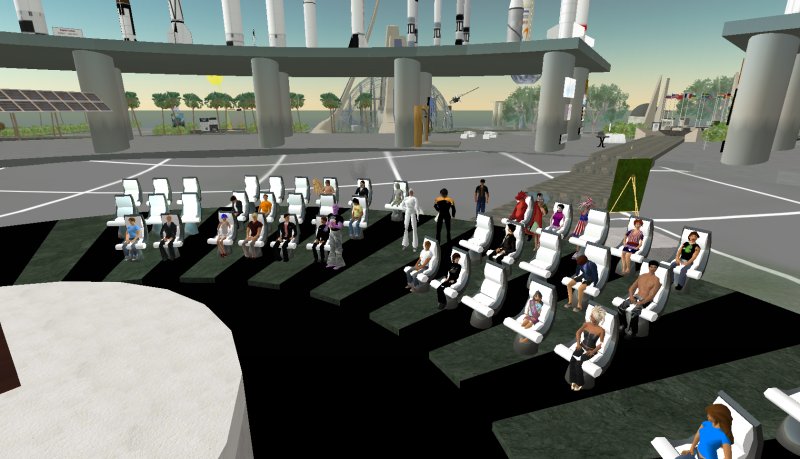
As the launch neared, more and more people showed up, to the point where all of the chairs were full, people were standing around, and the “sim” was at capacity. I believe that 70 people were there. We had an amazing chat as we waited patiently for the launch. Given my advanced age I was sure that I would be the oldest one in the room. This was not the case, however — several people noted that they had watched Mercury and Gemini launches, marking them as at least a few years older than me. Lots of questions were asked and answered. Someone wondered about the delays in the countdown, and we explained the concept of a programmed hold to them. There was a lot of excitement, and more than a little anxiety in the crowd. For the first time I was in the company of fellow space geeks.
The video feed was very clear, projected into Second Life via an inset QuickTime panel. As new people arrived they picked up on the excitement and were quick to register their positive impressions of the experience. There was virtual coffee in the Spaceport gift shop, and people longed for freeze-dried ice cream.
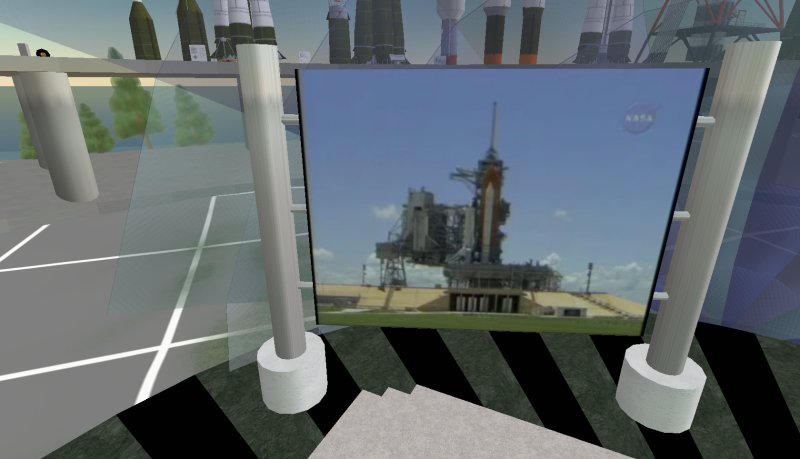
Finally, it was time for launch. We each held our breath (but didn’t stop chatting) and watched the launch:
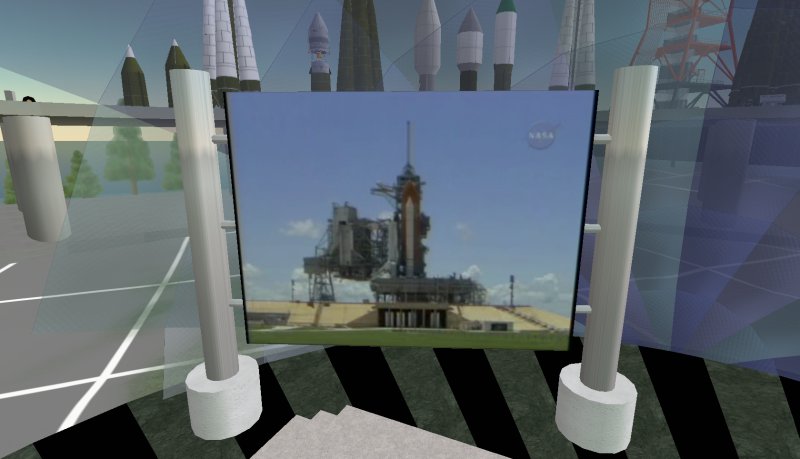

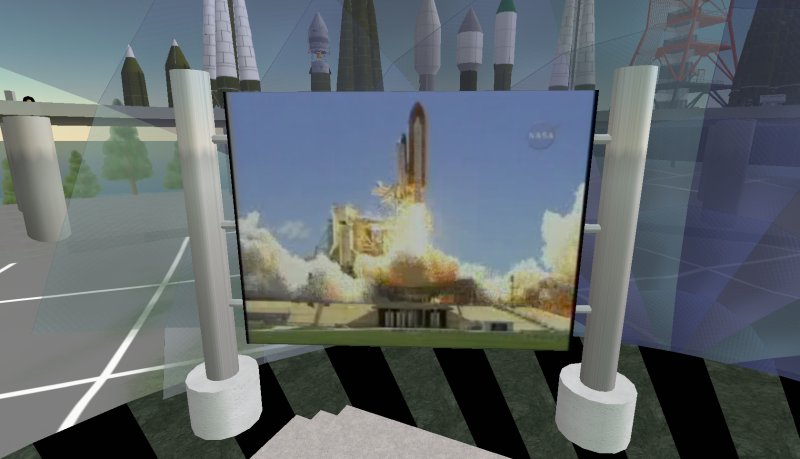
There were virtual cheers all around as Discovery cleared the pad:
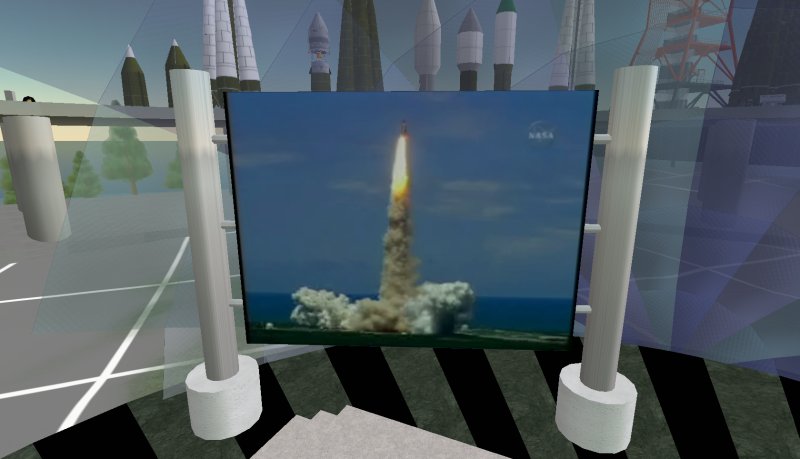
I am pretty sure that everyone there found this virtual event to be almost as good as actually being in the physical company of fellow space geeks. For me it was more than just pixels on a screen, it was a chance to watch and to enjoy something along with other people that were similarly inclined. We had a very intense shared experience, mediated and made possible by our virtual presence within Second Life.
So what’s the magic? Perhaps I could have found some like-minded friends online and we could have agreed to watch the launch while sitting in a chat room. We would have had very little sense of each other, and we probably wouldn’t have been fully engaged. This presupposes that I could even find these people in the first place — certainly not a given.
Within this virtual meeting place, there was a strong sense of shared purpose, some individual identity, some personalization (in fact we had to ask some of the avatars to turn off their computationally expensive “bling”), and (to me at least) a feeling that we were really “there”, immersed in this virtual environment.